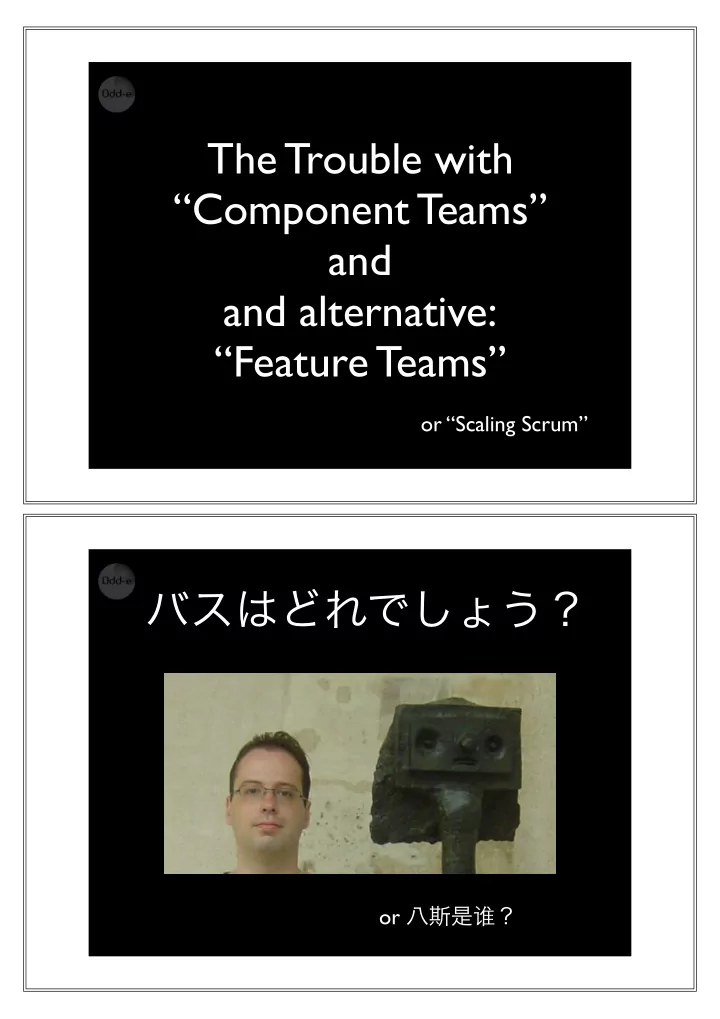

バスはどれでしょう? The Trouble with “Component Teams” and and alternative: “Feature Teams” or “Scaling Scrum” or 八斯是 ! ?
Practices for Scaling Lean & Agile Development Large, Multisite, and Offshore Products with Large-Scale Scrum Craig Larman Bas Vodde Scaling Lean & Agile Development Thinking and Organizational Tools for Large-Scale Scrum Craig Larman Bas Vodde Conway’s law Any organization that designs a system (defined more broadly here than just information systems) will inevitably produce a design whose structure is a copy of the organization's communication structure.
And... Because the design that occurs first is almost never the best possible, the prevailing system concept may need to change. Therefore, flexibility of organization is important to effective design. - Mel Conway One ProductOwner Multiple Teams Teams own a part of the system: “Component teams”
Low value work is implemented Everybody always busy? “Work gets created” Large systems... grow larger by default
One requirement does not map to one team Dependencies never balance out Result: Not complete requirements integrated Assign a problem to a role Impossible job, requirements never balance out. Result: priority and resource fights
Large backlog items must be split in “less customer-centric backlog items” Splitting before the iteration starts: “Architecture” Testing after the iterations ends: “System test”
How to become good? ... One ProductOwner 3 Teams
Give complete requirements to teams: “Feature teams” All dependencies within the team Feature Teams • long-lived—the team stays together so they can ‘jell’ for higher performance; they take on new features over time • cross-functional and co-located • work on a complete customer-centric feature, across all components and disciplines • composed of generalizing specialists
New problem: Dependency moved
Modern version control (e.g. svn) Continuous integration development practice Automated build and test Person specialization
Team specialization Team specialization
Specialization good Don’t let specialization constrain you Learn new specializations Emergent design Component guardians
Community of Practice Architect Facilitator Same for e.g. test, ScrumMasters Transition can often be done by reforming teams
What about large product development? Always have one product owner and one product backlog per product Or... a group of products...
Group requirements into “categories” called: “Requirement areas” Grouping based on customer, NOT on architecture Create “requirement area backlogs” RA backlog is a view on the product backlog Every PBI maps always to exactly one RA backlog
Every RA has their own “area product owner” RA product owner specializes in “customer-centric domain” Every RA has a set of feature teams From 5-10 per RA Teams specialize in that area Areas are dynamic over time
Overall PO decides on moving teams between areas Value vs velocity Transition strategy
“Development areas” are groupings based on architecture Helps transition, has all drawbacks of component teams Questions?
Recommend
More recommend